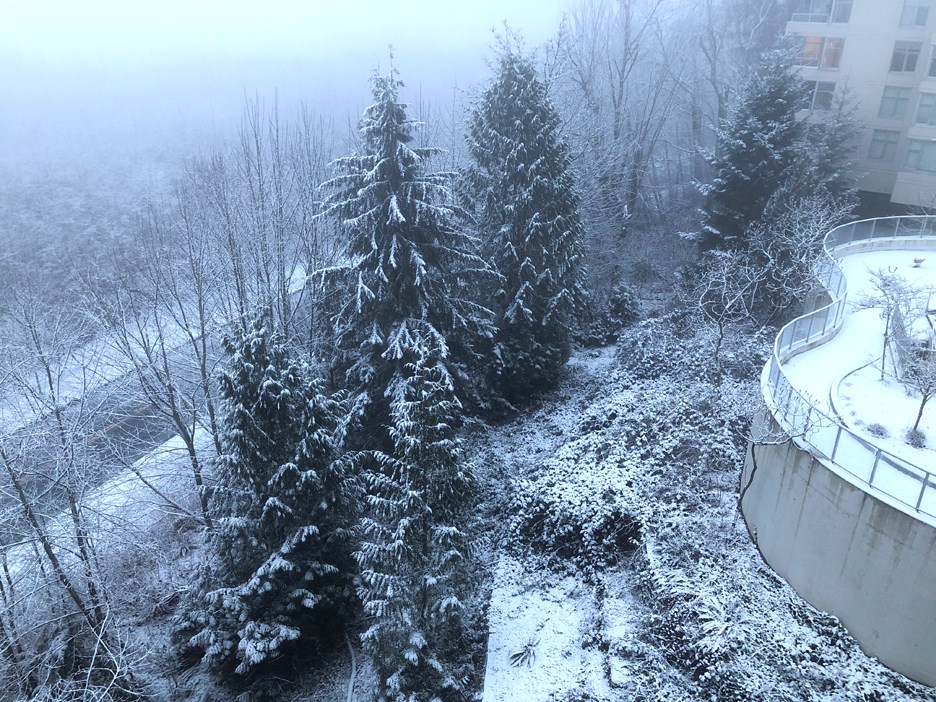It’s snowing like crazy up here on Burnaby Mountain as of 9 a.m. on Sunday morning and what’s the word we should give it?
Is it “snowmageddon” or is it a “snowpocalypse”?
Not all of Burnaby is getting snow right now. My friend who lives near Burnaby Mountain golf course said that as of 9 a.m. there wasn’t a single flake. Environment Canada has issued a snowfall warning for the Lower Mainland for the next few days, but we’ll see how much snow actually falls.
If more parts of Burnaby do get significant snowfall, I can safely say that we are not ready for it.
By “we” I don’t mean the City of Burnaby. I’ve seen their sand and salt trucks out there to prepare for it.
No, by “we” I mean all of the drivers who every year show they have no clue how to drive in snowy and icy conditions. I have years of eye tests to show that people simply lose their minds when driving in the white stuff.
To help things, here are some BCAA tips to remember if the snow gets any worse.
- Prepare your vehicle to perform in winter.
- Get a complete vehicle check-up and install winter tires before cold weather sets in. Sooner is better. That’s particularly true right now with many repair shops reducing their hours to meet COVID-19 safety guidelines meaning appointments may take longer to get.
- Carry COVID essentials, a winter driving emergency kit, and chains in your car.
- Know that outings during the pandemic require more advanced planning – before you head out research business changes, such as operation hours and need for an appointment, locations for bathroom stops, etc.
- Drive for weather conditions.
- Before you drive: check road and weather conditions, clear snow and ice from windows and lights, defog all windows.
- Route plan to avoid trickier areas such as hills or narrow unplowed streets.
- As you drive: slow down, leave more room between you and the car ahead and use turn signals well in advance.
- Put safety first.
- Be honest about your driving skills and comfort levels—don’t drive in conditions when you don’t have the skills or if you’re nervous.
- Always have a plan b. Avoid the temptation to drive when you shouldn’t by planning other transport options.
- Carry emergency items in your car, including: highly visible winter outerwear, safety cones, battery jumper cables, a shovel, windshield scraper and brush, flashlight and batteries, warm clothes and boots, gloves, blanket, supply of non-perishable food and water, and a spare container of winter-grade washer fluid.
- Driving less? Protect your vehicle.
- Without regular driving, vehicle batteries can deteriorate over time. The usual advice is to drive at least one hour per week for best battery life.
- Consider a battery maintainer to keep your battery charged. Wired into your vehicle’s battery and plugged into the wall, battery maintainers can be ordered online to limit outings.
- Keep an eye on tire pressure. Do walk-arounds regularly to check each tire and use a tire gauge if you have one. If you have a deflated tire, add air if you can or change it before heading out for essential trips.
Follow Chris Campbell on Twitter @shinebox44.



